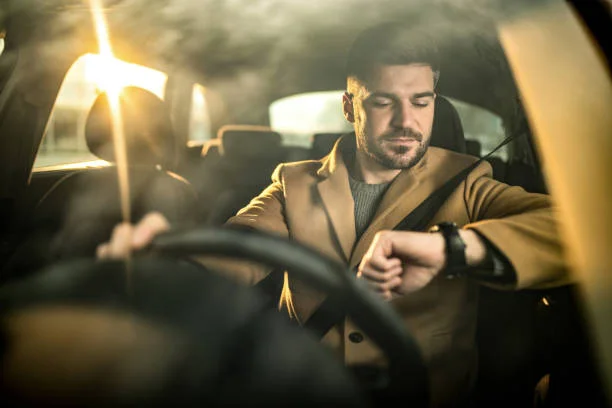Rideshare services like Uber and Lyft have reshaped transportation across Colorado, offering convenience—but also creating new legal complications when accidents happen. One of the most confusing issues arises when the rideshare driver wasn’t actively transporting a passenger or logged into the app at the time of the crash. Victims often assume the company’s insurance will automatically apply, only to discover that coverage depends heavily on the driver’s status at the exact moment of the collision.
Because the driver’s activity determines which insurance policies apply—and whether the rideshare company is even involved—many people turn to an experienced Aurora rideshare accident attorney to clarify their options. A driver’s online or offline status can transform a straightforward claim into a complex legal challenge requiring careful investigation and strategic action.
Why a Driver’s Status Matters More Than You’d Expect
Uber and Lyft classify their drivers as independent contractors, not employees. This classification allows the companies to avoid financial responsibility for many crashes unless specific conditions are met. Insurance coverage doesn’t depend on whether the accident involved a rideshare driver—it depends on what the driver was doing at the time:
- Were they completely offline?
- Were they logged into the app, waiting for a ride?
- Were they en route to pick someone up?
- Were they transporting an active passenger?
Each of these statuses comes with different levels of insurance coverage, liability rules, and limitations on recovery.
A powerful related post that expands your view and strengthens your direction.
When the Driver Is Completely ‘Off the Clock’
If the driver was not logged into the rideshare app when the crash occurred, they are considered to be acting entirely in a personal capacity. In this situation:
- Uber or Lyft is not liable
- The rideshare company’s insurance does not apply
- The victim must rely on the driver’s personal auto insurance
This often comes as a surprise, especially if the vehicle had a rideshare sticker displayed. However, simply working as a rideshare contractor does not automatically make the company responsible for every trip the driver makes.
When the Driver Is Logged In but Waiting for a Ride Request
If the driver is logged into the app but has not yet accepted a ride, limited insurance coverage from the rideshare company may apply. This is sometimes called Period 1 coverage, and it provides:
- Liability coverage
- Usually lower limits than when a passenger is involved
- No coverage for the driver’s own injuries or vehicle damage
Period 1 coverage is often insufficient in serious crashes, meaning victims may need to pursue compensation from the driver’s personal insurance as well.
When the Driver Has Accepted a Ride or Is En Route to a Passenger
Once the driver accepts a ride request, coverage increases significantly. Rideshare companies typically provide:
- Higher liability limits
- Uninsured/underinsured motorist coverage
- Contingent collision coverage (under certain conditions)
This level of coverage applies until the driver picks up the passenger. During this window, rideshare companies are more likely to become directly involved in the claim.
When a Passenger Is in the Vehicle
If a passenger is actively being transported, the rideshare company’s highest insurance coverage applies. This is known as Period 2/3 coverage, offering substantial protection:
- $1 million or more in liability coverage
- Protection for passengers
- Coverage for injuries caused by other negligent drivers
Accidents during this time are usually the easiest in terms of insurance access, though rideshare companies still often fight to minimize payouts.
What Happens When Multiple Insurance Policies Overlap
Some rideshare accidents involve several potential insurers—personal auto insurance, rideshare company insurance, and sometimes additional policies carried by employers or rental companies. Determining which insurance applies first (primary coverage) and which applies afterward (secondary coverage) can be complicated.
Insurance companies frequently dispute:
- Whether the driver was logged in
- When the ride was accepted
- How long the driver was online
- Which “period” the accident falls under
This is where legal guidance becomes critical, as injuries and compensation may hinge on a few minutes of app activity.
What If the Driver Claims They Were Off the Clock?
Drivers sometimes deny they were logged in to avoid a premium increase or losing access to the platform. Fortunately, rideshare companies keep detailed digital records of:
- Login times
- Ride acceptances
- GPS tracking
- Route information
- App activity before and after the crash
These digital logs can confirm or contradict a driver’s claims, allowing victims to establish accurate insurance coverage.
When a Third Party Is Also Responsible
Not all rideshare crashes are solely the fault of the driver. Other parties may also share liability, including:
- Distracted or impaired motorists
- Companies responsible for unsafe road conditions
- Manufacturers of defective vehicle components
- Commercial drivers or delivery trucks
When multiple parties are involved, victims may pursue compensation from more than one insurance policy, increasing the chances of full recovery.
What if the Accident Causes a Rollover or Severe Injury?
Rideshare vehicles are just as susceptible to severe collisions as any other car. In cases involving:
- Rollovers
- High-speed impacts
- Multi-vehicle pileups
- Pedestrian strikes
- Injuries requiring long-term treatment
Victims may require substantial compensation for medical care, mobility devices, rehabilitation, and lost income. These claims often require advanced accident reconstruction and in-depth investigation into the driver’s actions and the rideshare company’s policies.
How Compensation Is Calculated in Off-the-Clock Rideshare Crashes
Victims injured in rideshare-related crashes may be entitled to compensation for:
- Medical expenses
- Lost wages
- Reduced earning capacity
- Pain and suffering
- Permanent disability
- Property damage
- Emotional distress
However, the available insurance coverage varies dramatically based on the driver’s status. When the driver was off the clock, personal auto insurance becomes the primary source of recovery.
Why Legal Guidance Is Critical in Rideshare Liability Cases
Rideshare accident claims require careful analysis of app data, insurance policies, state laws, and company guidelines. Uber and Lyft have sophisticated teams working to minimize payouts. Without legal support, victims may miss crucial evidence or accept settlements that do not reflect the true cost of their injuries.
A skilled attorney can:
- Obtain app activity logs
- Demand rideshare company records
- Identify every liable party
- Challenge unfair denials
- Negotiate with multiple insurers
- Maximize compensation
This ensures the victim’s rights are fully protected, even when the driver was “off the clock.”
Your Legal Options Don’t End When the Driver Isn’t Working
A rideshare driver’s status matters, but it does not determine whether victims have a path to recovery. Even when the driver is off duty, there are legal avenues available — they just require more investigation and strategic action.
Understanding how rideshare coverage works and collaborating with knowledgeable legal counsel allows victims to pursue fair compensation and hold negligent drivers accountable, regardless of their app status at the time of the crash.
Explore this related reads crafted to deepen your understanding with purpose.







